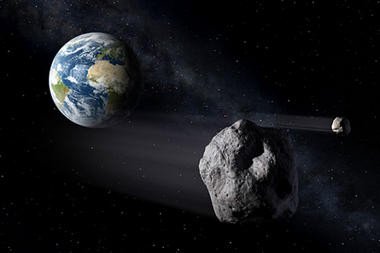An artist's illustration of asteroids. Credit: European Space Agency/P. Carril
VIENNA, Feb. 27 (UPI) -- Scientists at a United Nations meeting in Vienna say they're keeping a close eye on a large asteroid that may pose an impact threat to Earth in a few decades.
The subject of the asteroid known as 2011 AG5 was on the agenda of the 49th session of the Scientific and Technical Subcommittee of the United Nations Committee on the Peaceful Uses of Outer Space.
Some researchers at the session said the possibility the 460-foot-diameter asteroid could strike Earth in 2040 is significant enough that now is the time to discuss how to deflect it.
Astronomers in Tucson discovered the asteroid in January 2011.
"2011 AG5 is the object which currently has the highest chance of impacting the Earth … in 2040. However, we have only observed it for about half an orbit, thus the confidence in these calculations is still not very high," Detlef Koschny of the European Space Agency's Solar System Missions Division in Noordwijk, the Netherlands, told SPACE.com
"In our ... discussions, we thus concluded that it not necessarily can be called a 'real' threat. To do that, ideally, we should have at least one, if not two, full orbits observed," Koschny said.
The asteroid currently has an impact probability of 1 in 625 for Feb. 5, 2040, said Donald Yeomans, head of the Near-Earth Object Observations Program at NASA's Jet Propulsion Laboratory in Pasadena, Calif.
"Fortunately, this object will be observable from the ground in the 2013-2016 interval," Yeomans said, and in the unlikely scenario that its impact probability does not significantly decrease, "there would be time to mount a deflection mission to alter its course."















